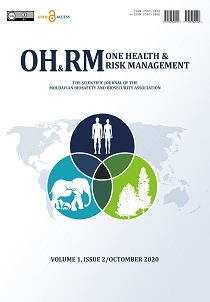Résumé
Introduction. Certains agents causant les sapronosis peuvent se multiplier tant dans le milieu externe (réservoirs d’eau, sol, plantes), que dans l’organisme des animaux, à cet ordre d’agents pathogènes s’attribuent aussi les bactéries du genre Yersinia.
Matériel et méthodes. L’isolation et l’identification de Y. Pseudotuberculosis s’est faite en conformité aux instructions « Epidémiologie, diagnostique de laboratoire des yersiniosis, organisation et déroulement des mesures préventives et antiépidémiques ». La résistance aux antibiotique a été effectuée par la méthode diffusimétrique, en conformité à l’EUCAST et au guide national. La capacité de former des biofilms, aussi que leur densité, ont été déterminés grâce à la méthode spectrophotométrique selon la densité optique.
Résultats. Les cultures étudiées ont démontré une diminution du niveau de l’activité du sucre, en cours de cultivation à une température de +37°C, par rapport aux résultats obtenues à une température de 25°C, de même, on a enregistré des différences de la résistance aux antibiotiques en fonction de la température de cultivation. On a établi de même que les cultures de Y. pseudotuberculosis ont été capables à former des biofilms plus denses (λ570) à la température de 25°C, que ceux formés à la température de 37°C.
Conclusions. S’est établi que la manifestation des propriétés biologique des isolés étudiés de Y. pseudotuberculosis (modification de l’activité du sucre, le niveau de résistance aux antibiotiques et la formation des biofilms) dépendent des conditions de cultivation.
|
 Vues: 643|
|
Vues: 643|
|
